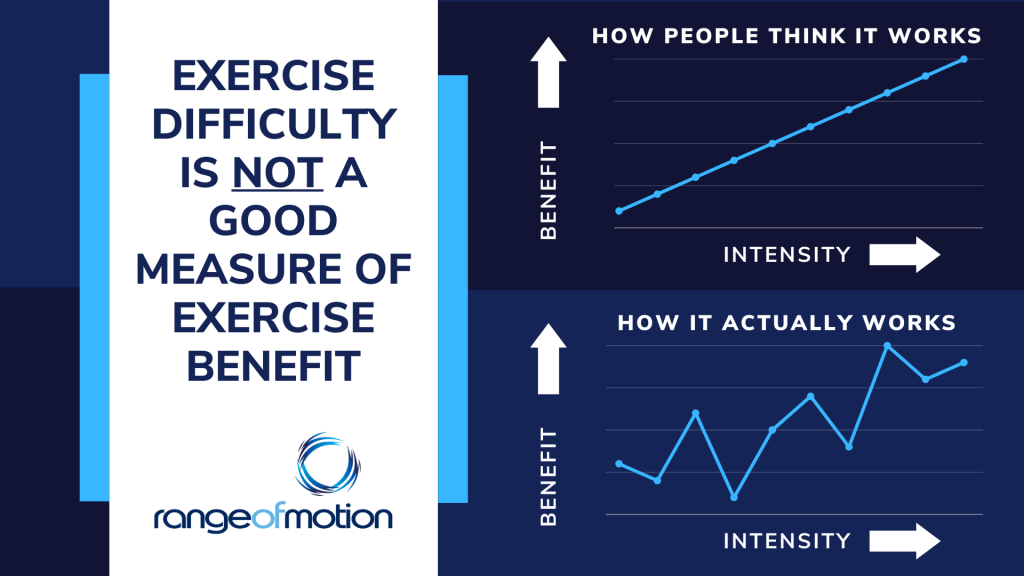That without ending up in a crumpled, sweaty puddle on the floor, the session will be a waste of time.
Too often, we tend to think that levels of exertion and how much benefit we’ll get from the session are perfectly correlated. Work harder… get more results.
And sure, hard work is important. Lifting heavy things is important. Breathing hard is important. Exertion is important.
In fact, intensity is a really important variable.
It’s possibly THE most important variable.
But there’s a misunderstanding of what intensity is. It’s not aching muscles, burning lungs, high heart rate and pouring sweat. Sure, these things can be one SIGN of intensity, but they’re certainly not the only sign.
If we use physical exhaustion or muscular failure as own only measure of success, we’re neglecting our health. We’re neglecting styles of training that we need to optimise our health.
The top graph below shows how people THINK it works. The bottom graph is how it actually works.

There are some examples of HIGHLY beneficial training styles and methodologies that are often neglected because they’re ‘not hard enough’.
- Short sharp sprints, including agility work. They’re over in a couple of seconds but are important for both athletes and the general population.
- Longer, slower efforts at a lower intensity don’t leave you in a heap on the ground, but will train your aerobic capacity.
- Unilateral work (training one arm or leg at a time) may not exhaust you as much as bilateral (double limb) work, but it will help you build balance and stability.
- Lifting moderate weights very quickly for a very low number of repetitions may not feel like it’s making you strong, but it will make you fast.
- Doing isometric (static) holds may seem like they’re not doing much because you’re not doing lots of ‘reps’, but you’re building strong muscles and tendons.
- Doing activation and stabilisation drills may seem menial, but they’ll build a strong and stable body that is better suited to resist injury.
- Doing explosive jumps and throws for a very low number of reps with a low load won’t leave you sore or fatigued, but are one of the most effective ways to build power.
- Reducing the weight you’re lifting and focussing on technique can actually increase intensity by forcing underactive muscles to activate.
- Focussing on heavy, slow lowering of weights (accentuated eccentric training) is on of the best ways to build strength, even though you’re not moving fast.
Intensity isn’t It’s as much about exertion as it is intent.
Once you realise this, you’ll open up your mind to a whole new range of exercise possibilities that will significantly benefit your future health.




